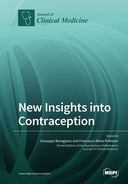Explore

New Insights into Contraception
0 Ungluers have
Faved this Work
Login to Fave
Today, a great variety of contraceptive techniques are available to women; this, coupled with improving the educational levels of female children and adults, is hastening a decline in fertility and consequently, population growth. With the advent of sustained fertility rates lower than replacement levels in many countries, including China and India, we are already witnessing major economic, social, environmental, and geopolitical consequences. Given this situation, today, the promotion of the use of contraception means improving health, not demography, placing emphasis on individuals and not just on methods alone; on the quality of services, and not simply on availability. Indeed, there is an increasing awareness that contraception can help women reduce health risks that are associated with reproductive events and specifically, with unwanted pregnancies. This means that, no matter how ideal a method may be from a purely scientific viewpoint, it must be submitted to the free, decision-making of well-informed women. To contribute to this new user-centric perspective, this reprint presents a series of articles in which technology is considered withing the broader concept of women’s health. Five articles deal with issues related to the users’ and providers’ perspectives; three discuss a modality that is receiving increasing attention, the so-called Long-Acting Reversible Contraception (LARC); and the last three contributions highlight the new advances in oral hormonal contraception.
This book is included in DOAB.
Why read this book? Have your say.
You must be logged in to comment.
Rights Information
Are you the author or publisher of this work? If so, you can claim it as yours by registering as an Unglue.it rights holder.Downloads
This work has been downloaded 82 times via unglue.it ebook links.
- 82 - pdf (CC BY) at Unglue.it.
Keywords
- abnormal uterine bleeding
- alternative insertion
- amenorrhea
- bleeding pattern
- combined hormonal contraception
- community pharmacies
- Contraception
- contraceptive attitude
- contraceptive experience
- contraceptive implant
- contraceptive knowledge
- contraceptive method
- counselling
- COVID-19
- cycle control
- dienogest
- drospirenone
- dysmenorrhea
- emergency contraception
- emergency contraception pills
- estetrol
- estradiol
- ethinylestradiol
- etonogestrel implant
- Health services administration
- hemostasis
- hormonal contraception
- implantation site
- inner-city clinic
- intrauterine device
- LARC
- LARC placement delays
- levonorgestrel
- levonorgestrel-releasing intrauterine system
- long-acting reversible contraception
- long-acting reversible contraceptive
- long-acting reversible contraceptives
- medicine
- Metabolism
- morning-after pill
- n/a
- Nexplanon
- nomegestrol acetate
- norethindrone acetate
- norethisterone acetate
- Oral contraceptives
- Pop
- Progestasert
- progesterone-only pills
- Quality of life
- removal rates
- Reproductive health
- sexual arousal and desire
- Sexual Behavior
- sexual habits
- sexual health
- SHBG
- short-acting reversible contraceptive
- short-acting reversible contraceptives
- Students
- subcutaneous device
- ulipristal acetate
- vaginal bleeding
- vaginal spotting
- Women
Links
DOI: 10.3390/books978-3-0365-7277-2Editions

